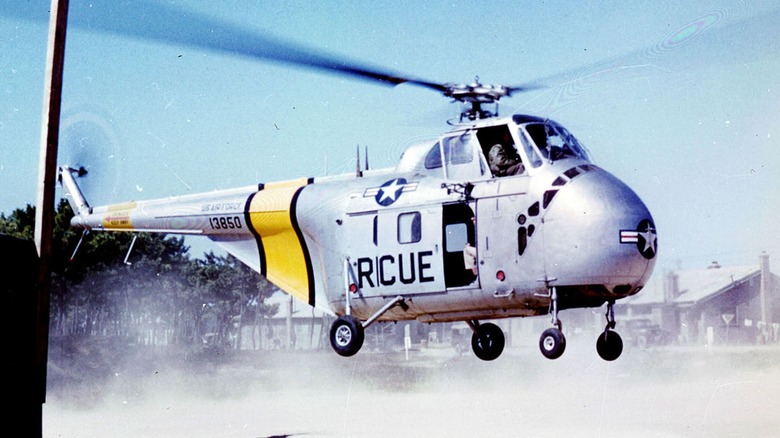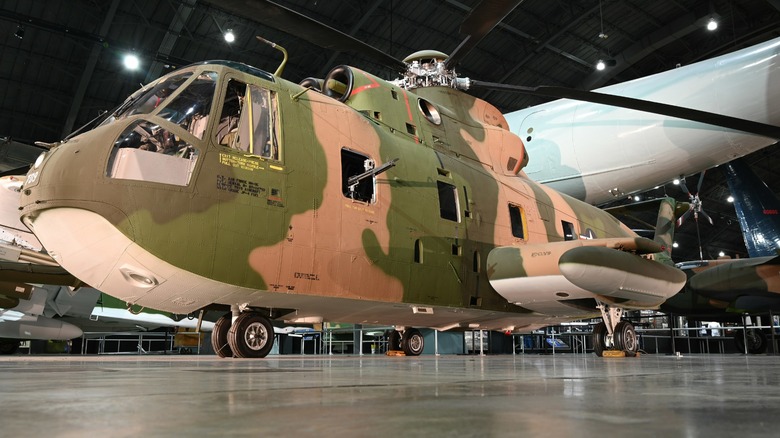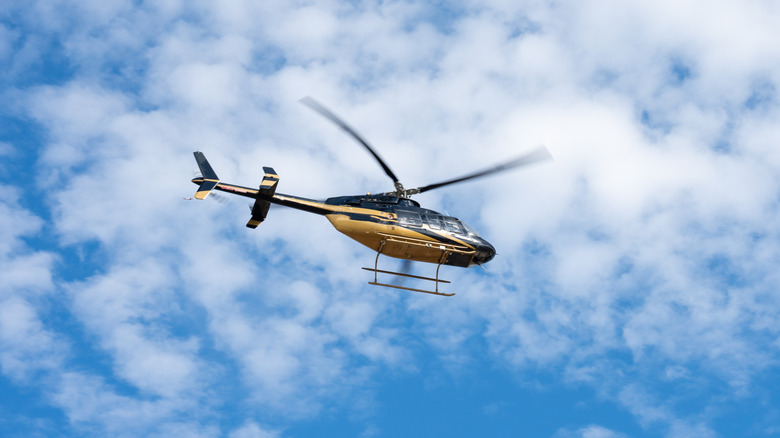Yes, A Helicopter Can Fly Across The Atlantic Ocean (And This One Was The First)
Helicopters aren't best known for making epic journeys — especially not the worst military helicopters of all time. However, they shouldn't be counted out entirely, as not only are helicopters capable of traveling from one side of the Atlantic Ocean to the other, but they proved their ability to do so decades ago.
Way back in the 1950s, two helicopters made history by becoming the first to cross the Atlantic. Two Sikorsky H-19A helicopters departed Massachusetts' Westover Air Force Base on July 15, 1952. One was known as Hop-A-Long, and was piloted by Captain Vincent H. McGovern with co-pilot Captain Harry C. Jeffers, alongside Whirl-O-Way, which was flown by First Lieutenant Harold W. Moore and Captain George D. Hambrick. Making stops at Newfoundland, Canada, Greenland, and Iceland, the two helicopters reached their destination in Prestwick, Scotland, on July 31, with 3,410 miles behind them.
As historic as this flight was, it was outdone just over a decade later by a transatlantic helicopter flight that made the trip without stopping.
Over a decade after the first transatlantic helicopter flight, the first nonstop one occurred
Some helicopters are capable of in-air refueling, which has made them perfect candidates for long-distance flights for well over half a century.
Just under 15 years after the first transatlantic helicopter flight, two Sikorsky HH-3E helicopters – also known as Jolly Green Giants — departed Floyd Bennett Field in New York, and 30 hours and 46 minutes later, successfully landed in Paris, France, on June 1, 1967. The ability to refuel while flying meant that the Jolly Green Giants didn't have to land once between takeoff and reaching their destination. Suffice to say, this trip definitely made this variety one of the most iconic military helicopters in history.
But not just any helicopter can traverse the Atlantic or similar long distances. A lot more than just fuel and capable pilots goes into such a flight.
What goes into long-distance helicopter flights?
Flying helicopters across the Atlantic is impractical and costly compared to airplane travel. While helicopter travel is generally pretty safe, there's a lot of fuel consumed, and they're generally a lot slower than planes. When incredible, marathon-like trips are accomplished, though, it should come as no surprise that they require all kinds of specific elements coming together that not all helicopters may have.
Navigation is one of the most important aspects of helicopter flight. It's especially important when crossing large bodies of water that such systems are top-of-the-line, as a loss of direction could prove disastrous. Similarly, maintaining a steady line of communication with those on the mainland ensures those in the cockpit can receive crucial updates as necessary. Depending on the conditions the pilots are expected to fly through, some weather-proofing could be in order. For instance, rotor ice protection brings heating to the edges of helicopter blades, preventing the accumulation of ice in flight through frigid climates.
No matter how you slice it, taking a helicopter across the Atlantic Ocean is applause-worthy. Still, due to its expense, impracticality, and other factors, don't expect it to become the norm anytime soon.


